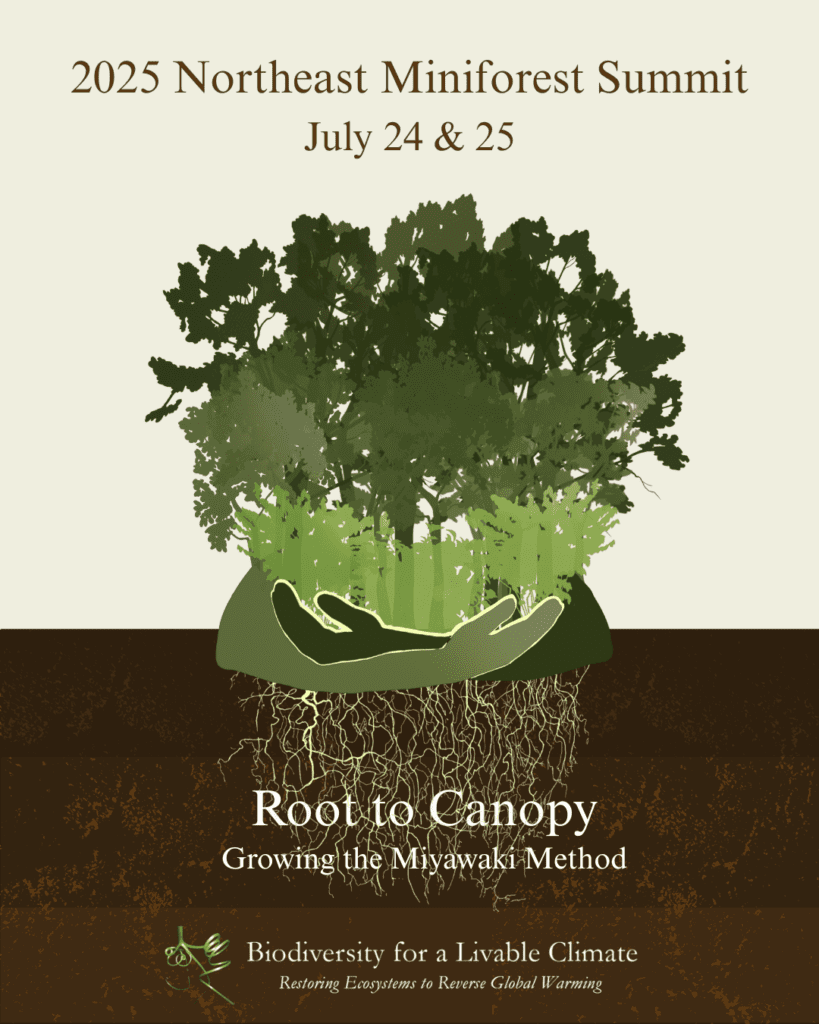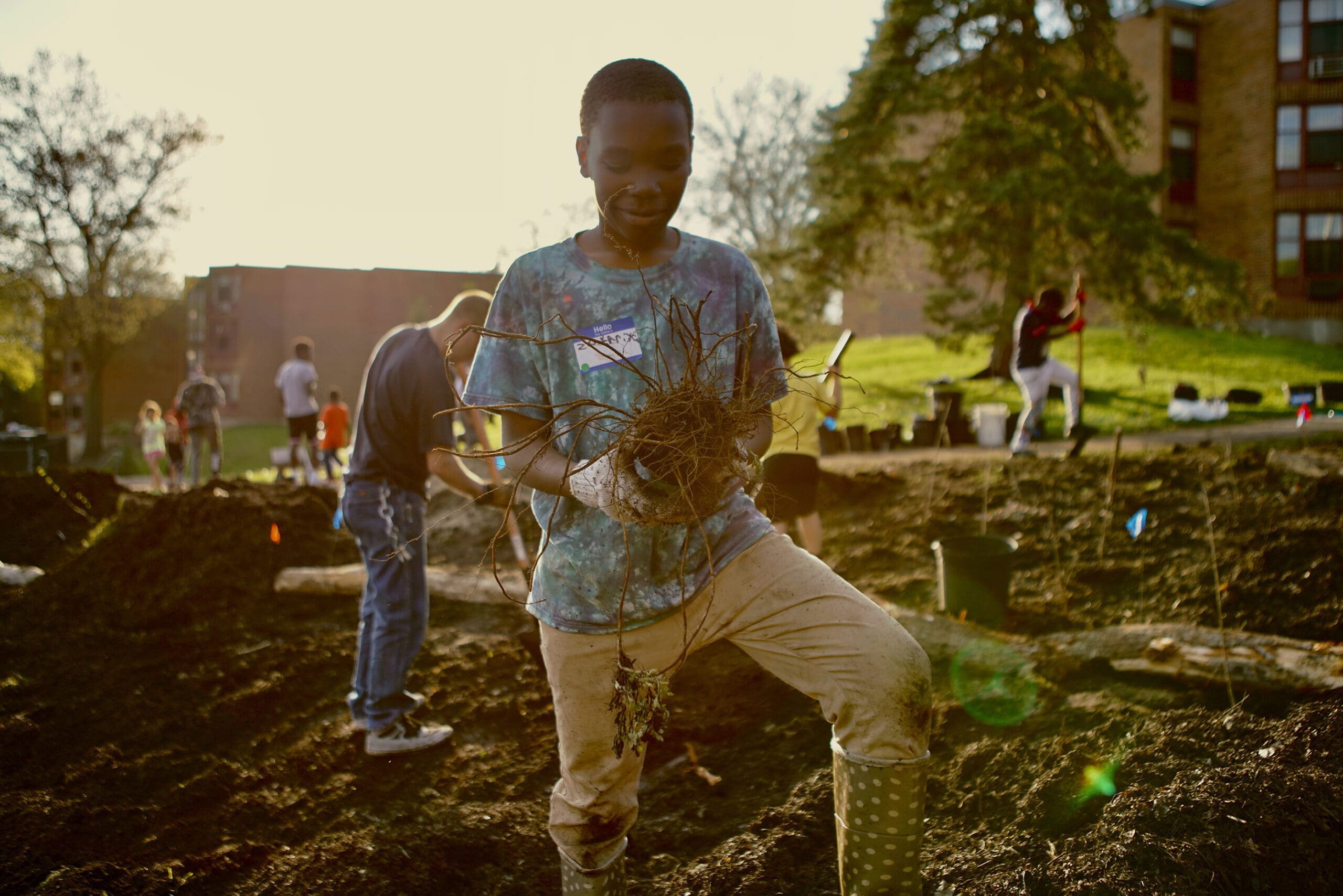We Need a New Climate Story
Nature is Climate
Biodiversity loss is not just the result of climate change, it is a primary driver of climate change. Only solutions that prioritize this web of life will create a truly livable climate for all.
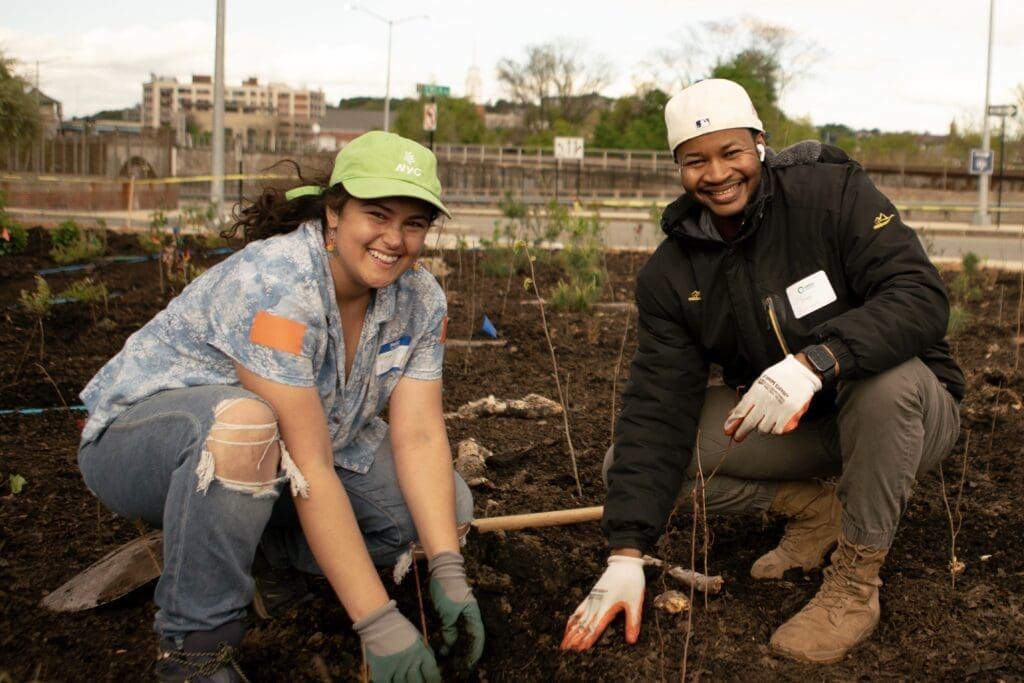
Join us for the 2025 Northeast Miniforest Summit!
Featuring more than a dozen speakers across two virtual half-days and an in-person bus tour, the 2025 Northeast Miniforest Summit brings together practitioners, researchers, and leaders from diverse fields to unpack the Miyawaki Method from root to canopy.
Restore Nature – Cool the Planet
Only nature has the ability to both cool the planet and lower greenhouse gas levels. Our planet is already too hot and too dry to maintain a stable climate and support life. These 4 Climate Keys are interlocking pieces of the cycles we must repair to quickly stop warming and start cooling the planet.
Cool
Healthy ecosystems full of biodiversity create direct cooling effects for our hot planet. More Nature = Less Heat.
Hydrate
Keeping water in the ground supports plants, crops and people. Beavers, insects and microbes are part of the Infiltration Team
Plant
Planting for biodiversity creates healthy ecosystems. Forests sequester carbon and use water vapor to move heat away from the Earth
protect
Indigenous leadership and wisdom can help us. Stop deforestation, industrial ag, mining, and pollution that kill off biodiversity.
Replace with regenerative practices
Q: What about atmospheric Carbon Dioxide – you know – the greenhouse effect?
A: It’s an important part of the story, but not the whole story. Learn More.
Who We Are
Bio4Climate Tells the Hidden Stories
For nearly a decade we have looked behind, around, and under the prevailing climate narratives for the missing pieces of the puzzle. We continue to bring you authors, ecorestoration specialists, and scientists from around the world who explore the interlocking systems that create a livable climate.
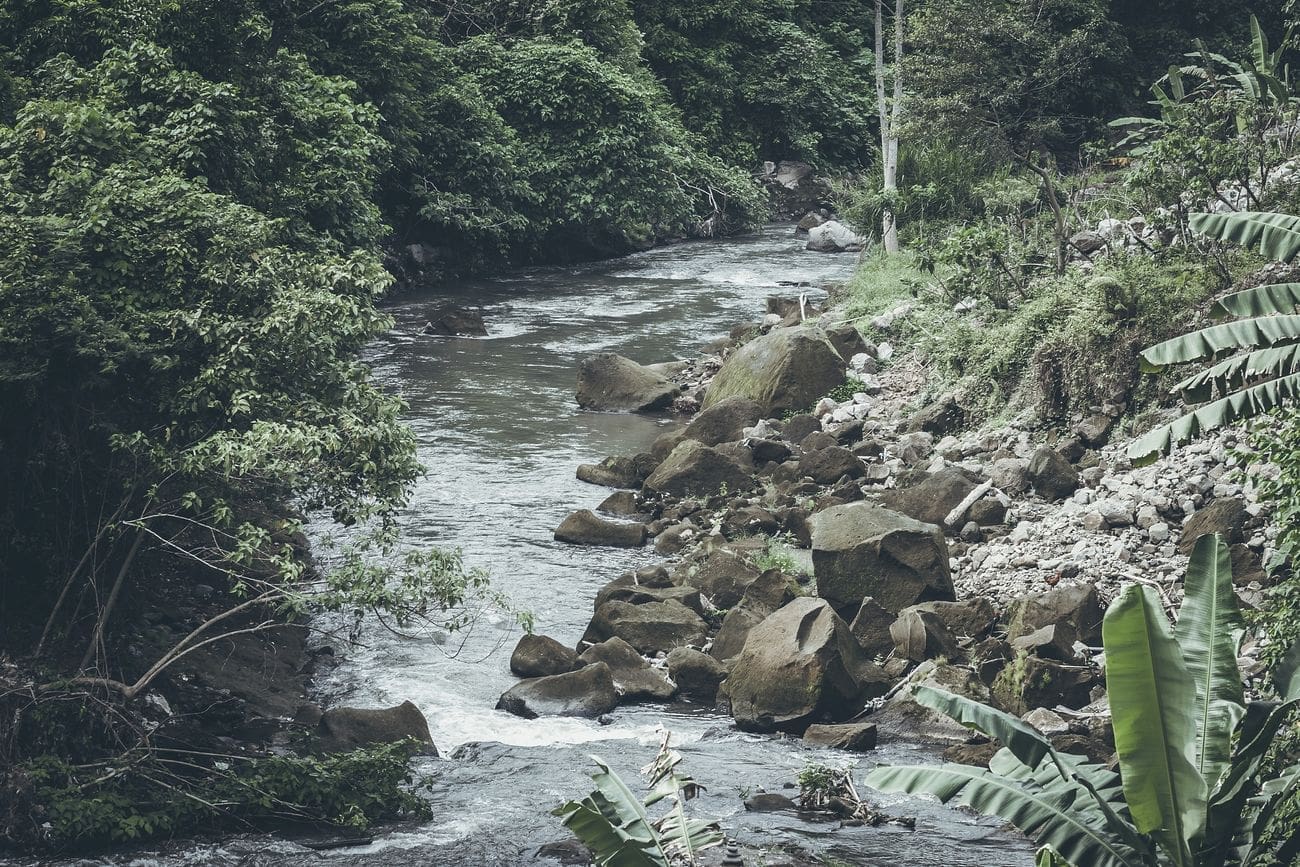
Stay on top of the Climate Conversation
Through education, policy and outreach, we promote the great potential of inexpensive, low-tech and powerful Nature solutions to the biodiversity and climate crises, and work to inspire urgent action and widespread implementation of many regenerative practices.
This Week
Events and Community
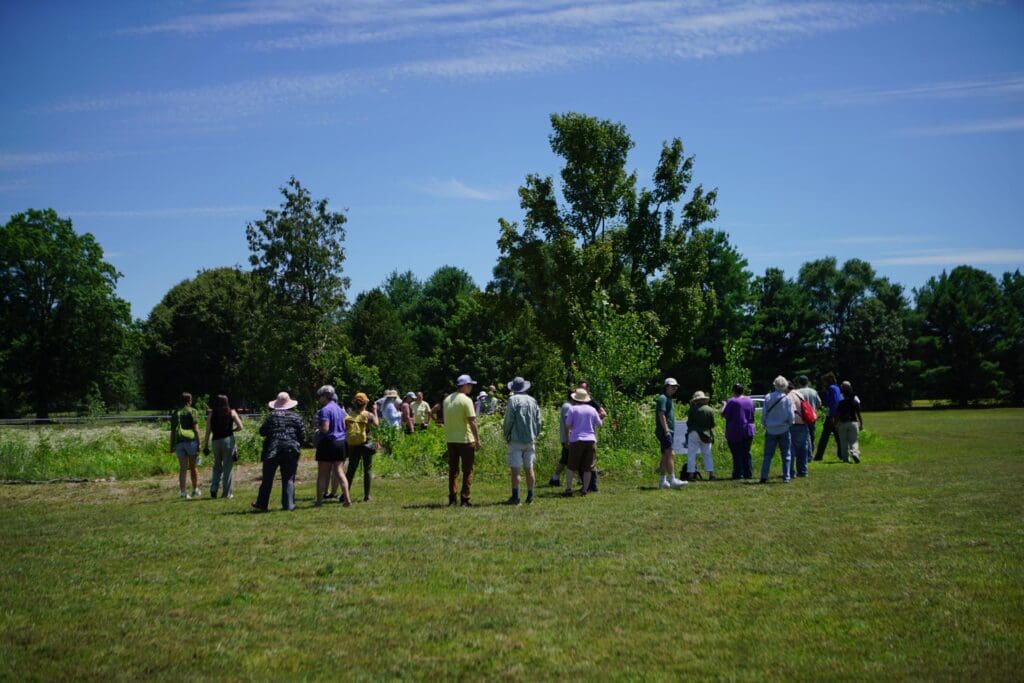
- That's a wrap on the 2025 Northeast Miniforest Summit!
Across a two-day virtual program and in-person bus tour, the 2025 Northeast Miniforest Summit drew more 600 registrations from around the region and beyond. Together, we explored the web of relationships that make miniforests, and the communities that care for them, thrive. We’re walking away energized by the care, clarity, and collaboration that emerged from so many corners of this growing movement.
Be on the look out for full session recordings, a new Northeast Miniforest Guide, Mighty Networks community, and so much more! In so many ways, this was just the beginning!
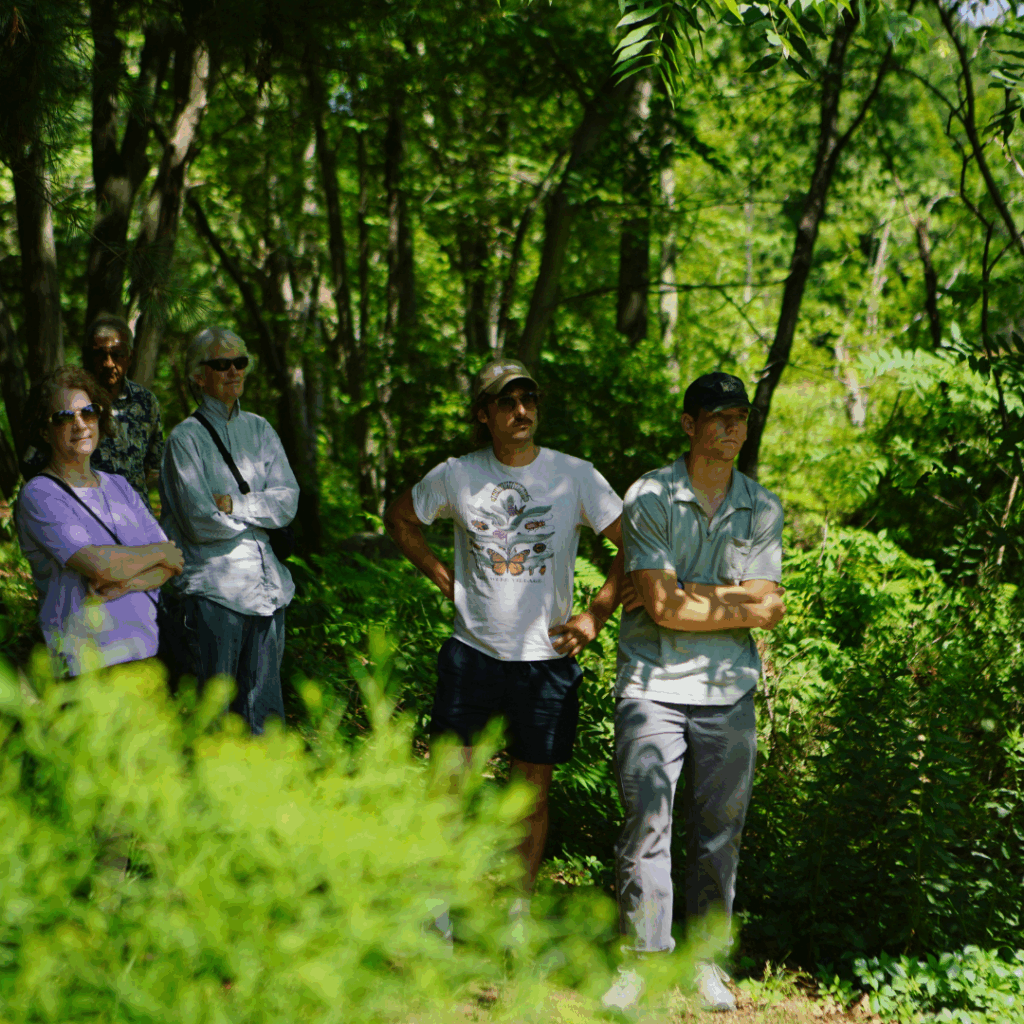
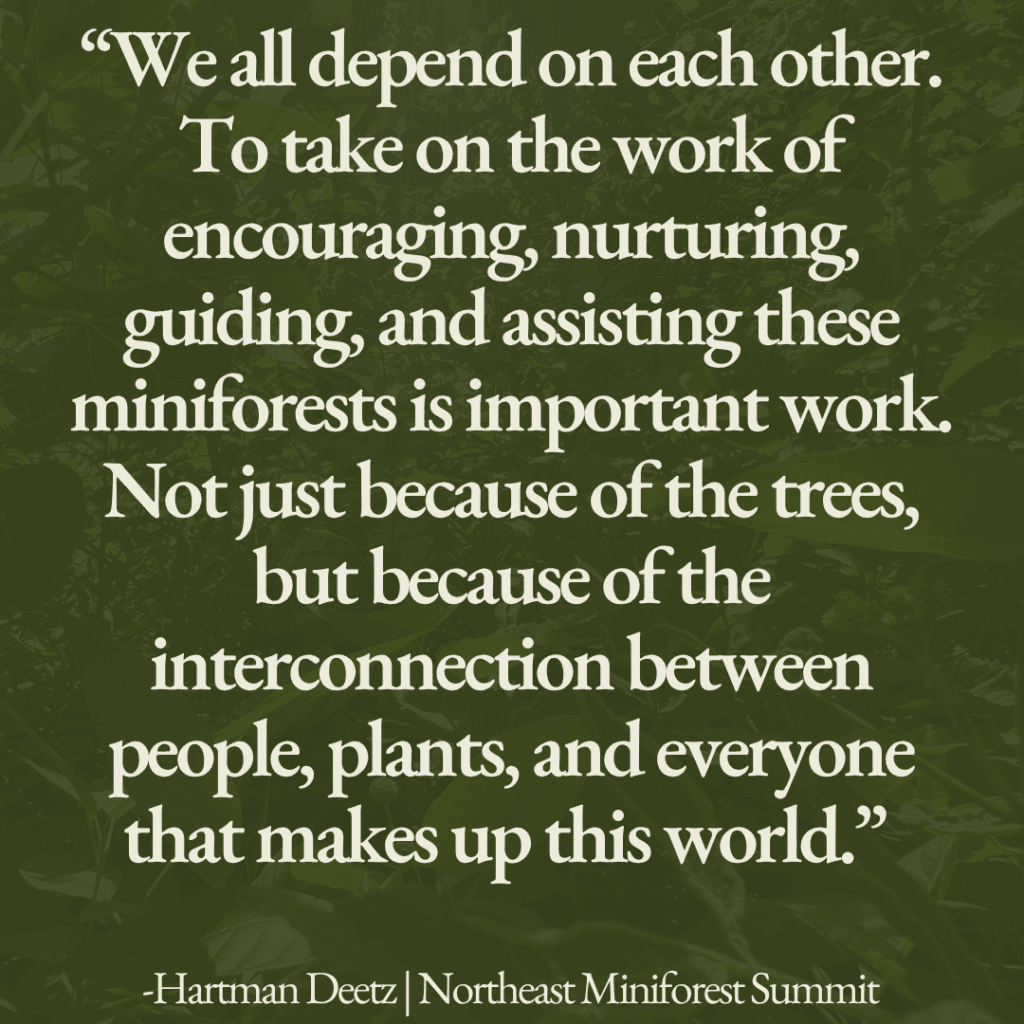
- Thank you to the staff, presenters, and attendees whose enthusiasm made the week what it was, with special gratitude for our sponsors and outreach partners.
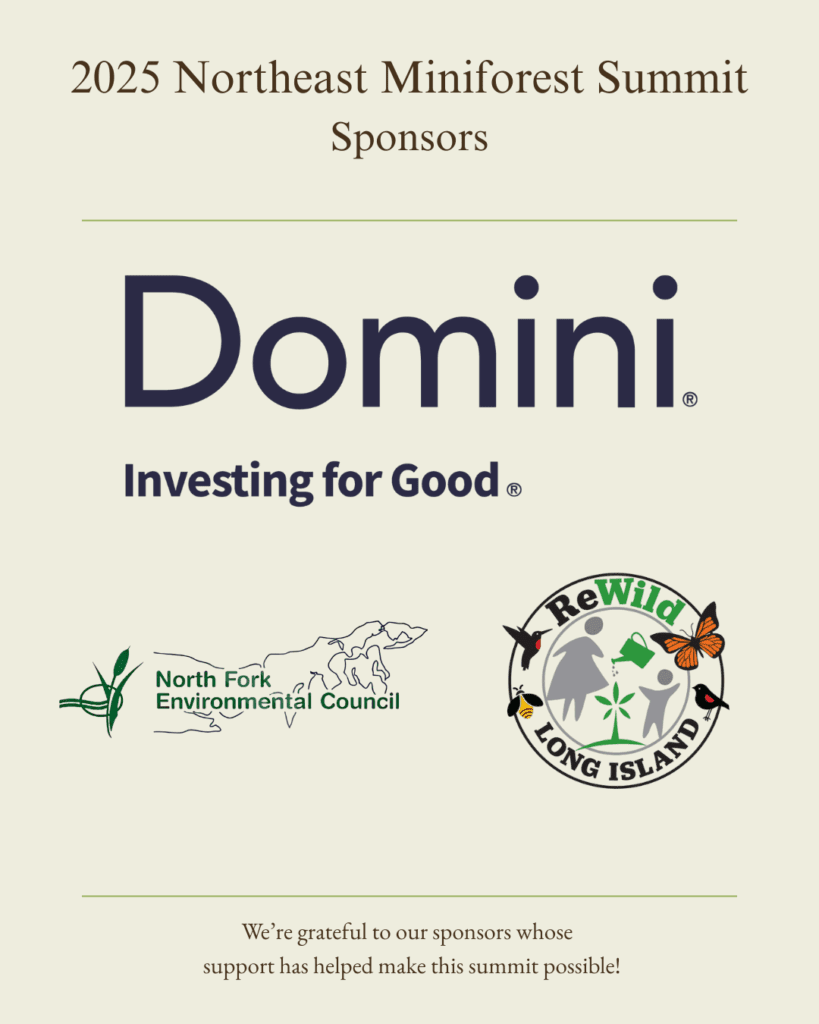
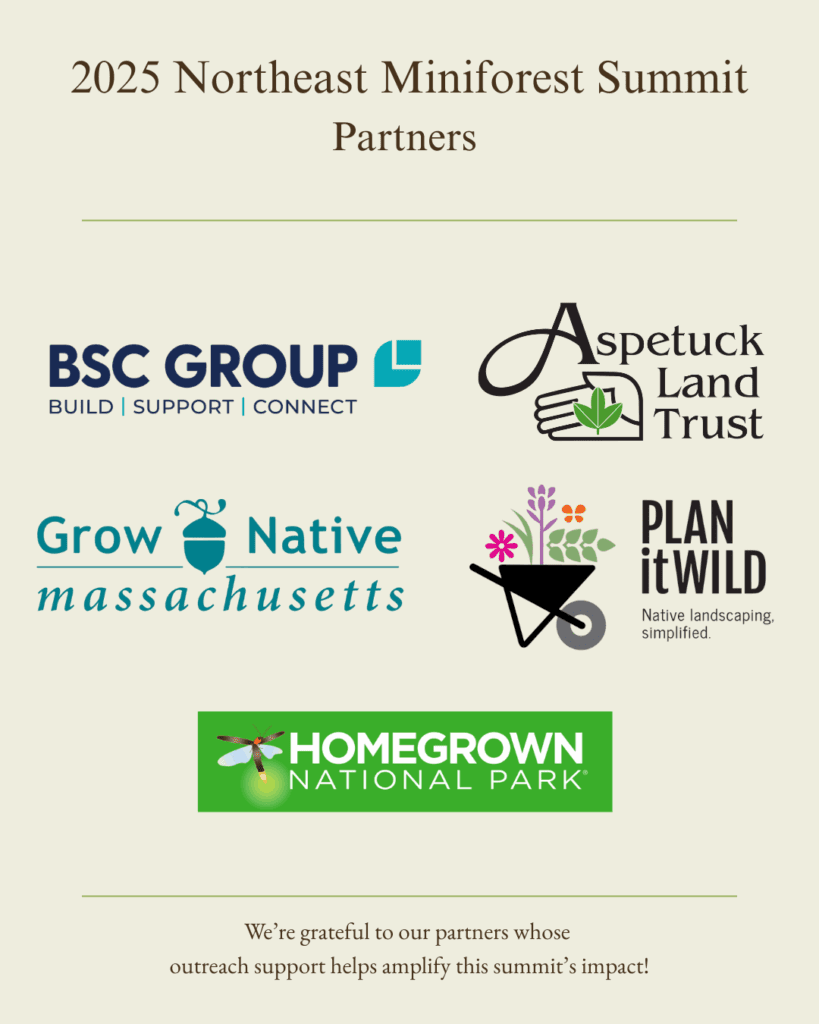

- Cambridge Moth Ball
More than 300 people came together under the stars at Kingsley Park in Cambridge, MA on Wednesday evening for the 2025 Cambridge Moth Ball, a National Moth Week celebration co-hosted with Boston Birding Festival, Earthwise Aware, Cambridge Wildlife Arts, Mystic Charles Pollinator Pathways, the City of Cambridge Fresh Pond Reservation, and other local partners.
This year’s theme focused on micro-moths, the tiny, often overlooked species that play a vital role in ecosystems and climate resilience.
Families, artists, scientists, and nature lovers came together for hands-on activities, moth observation, art-making, and talks by author Cara Giaimo and entomologist Dr. Jane Waters. We also learned to use tools like Buggy and iNaturalist to contribute to real-time biodiversity research.
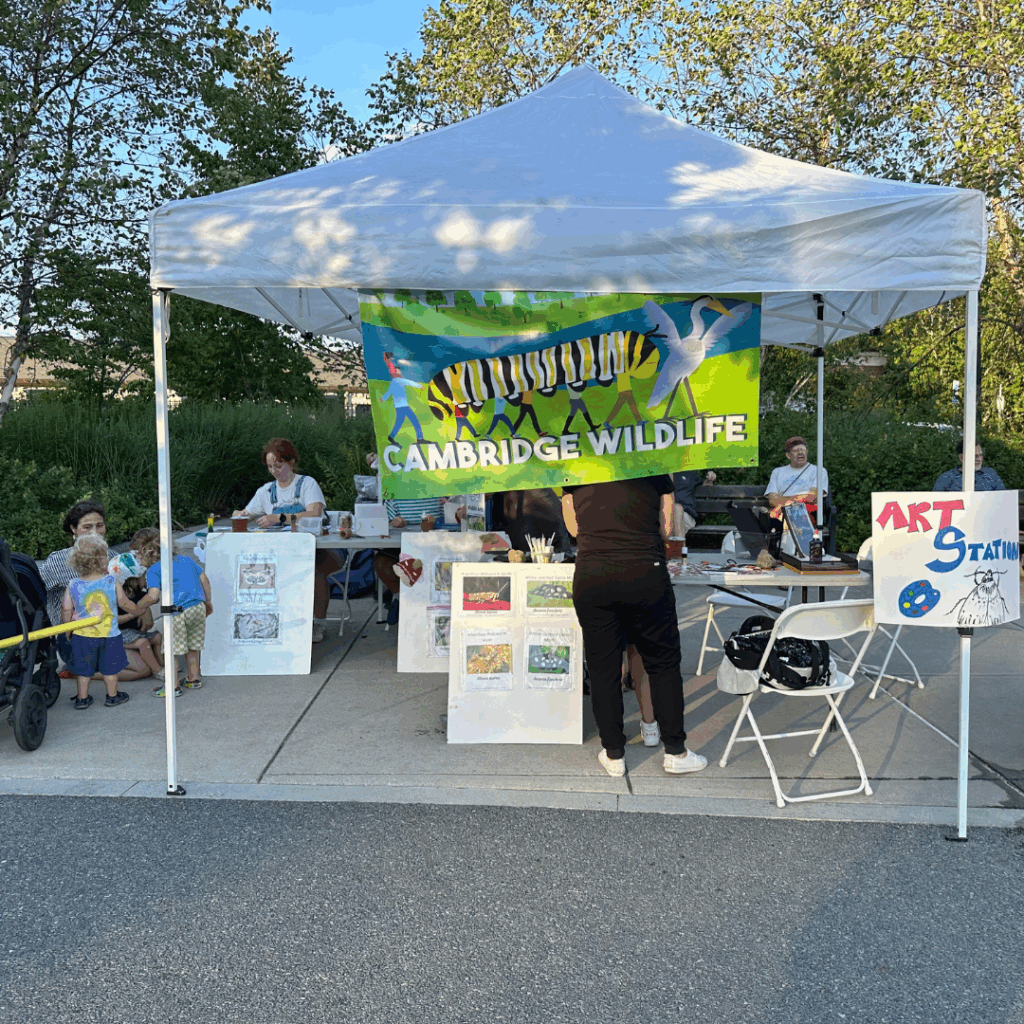

News and Insights
- In New Jersey, Benefits Bloom in Tiny Forests
The New York Times spoke with experts and miniforest practitioners around Deleware and New Jersey, including Northeast Miniforest Summit keynote speaker, Dr. Doug Tallamy of Homegrown National Park.
“The downsides are few, and the potential benefits could be large.” Dr. Tallamy said. Because the forests start with small seedlings and require little maintenance after the first few years, he said, microforests are one of the cheapest options for boosting nature and biodiversity in cities.
- Governments Are Legally Required to Address Climate Change, Top Global Court Says
The International Court of Justice came out swinging this week, saying that countries that have historically driven the climate crisis have a legal responsibility to clean up their act. If not, they could be on the hook legally, with courts able to order them to stop or pay up.
As international courts call on governments to take responsibility for climate harm, how can they invest in and scale up nature-based solutions to meet the moment?
Get Involved
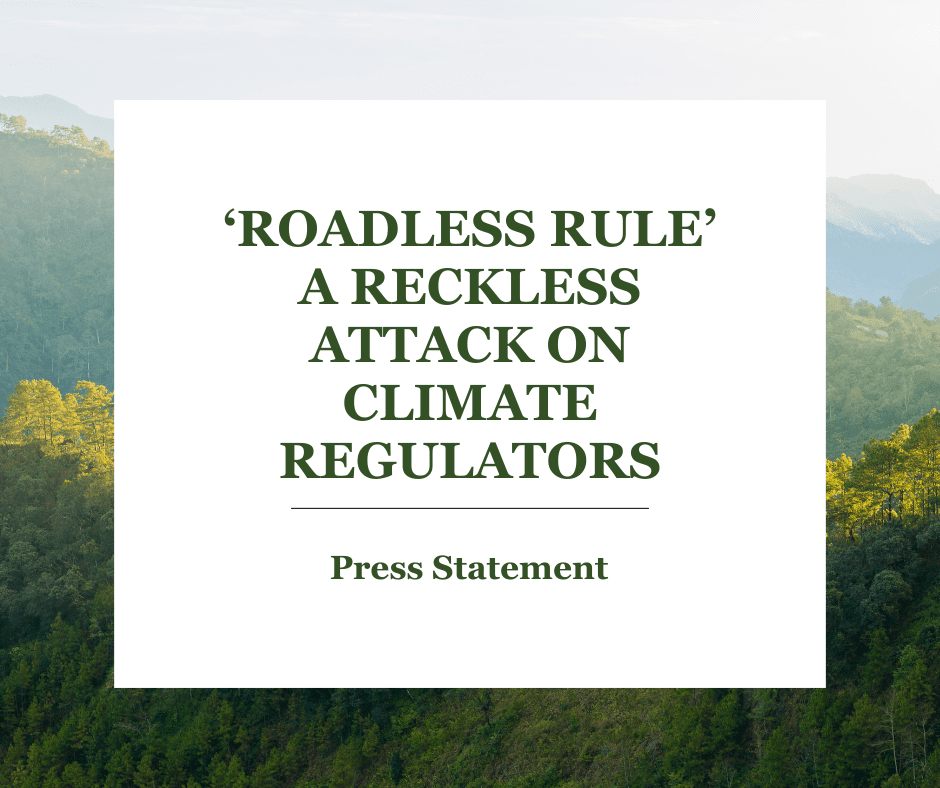
‘ROADLESS RULE’ A RECKLESS ATTACK ON CLIMATE REGULATORS
CAMBRIDGE, MASS. – Beck Mordini, Executive Director of Biodiversity for a Livable Climate issued the following statement on the White House’s decision to declare “open-season” on 58 million acres of native forests, paving the way for road and development construction.
“Just as tens of millions of Americans are experiencing a lethal, record-breaking heat wave, the federal government has launched a reckless attack on one of our most vital natural climate regulators. Forests aren’t just a collection of trees, they are complex, living systems that manage water, cool the planet, and sustain biodiversity across…
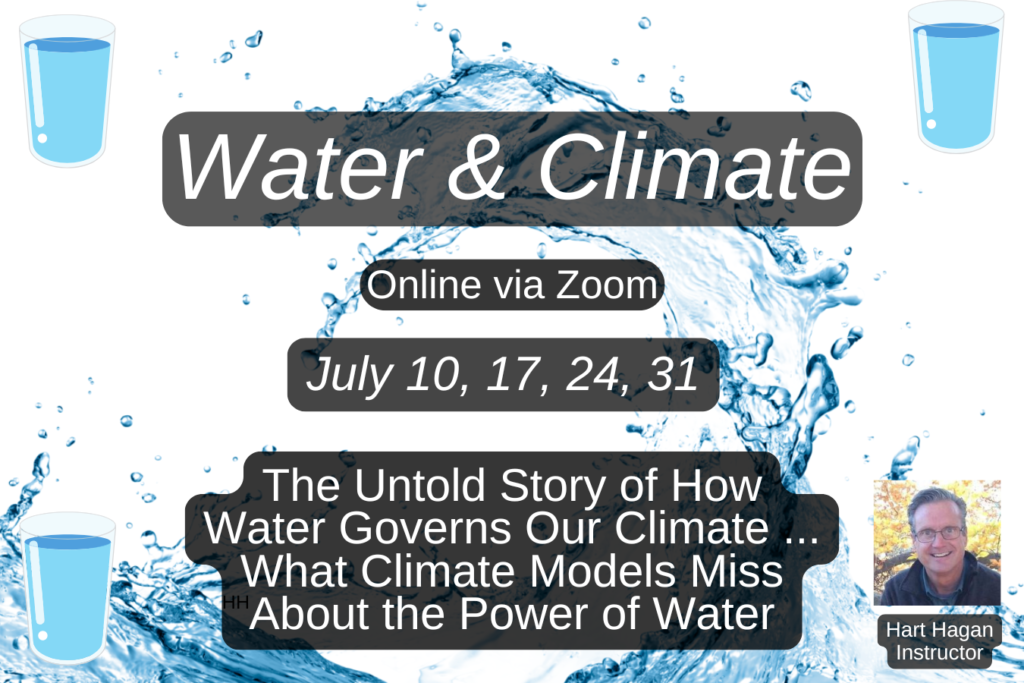
Water—The Missing Climate Solution—July 10-31
What if there’s a powerful solution we’ve been overlooking—one that could actually help cool the planet, starting right where you live?
The untold story begins with water.
Water is the most overlooked climate regulator. Through the cycling of water—plants, clouds, grasslands, wetlands and forests help stabilize Earth’s temperatures. When these systems are healthy, they cool the planet. But clear-cutting, tilling, development and other destructive land management practices have dismantled these natural cooling mechanisms.
We can bring these powerful cooling systems back to life. Join us for Water…
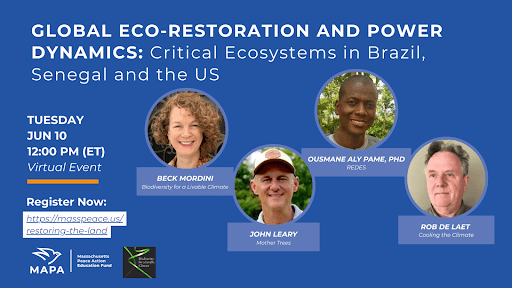
Global Eco-Restoration and Power Dynamics—Critical Ecosystems in Brazil, Senegal and the U.S. – JUNE 10 – 12:00 noon ET
Climate disruption is increasing and with it so is polarization, both within the US as well as among nation states. Now more than ever it is incumbent upon us to highlight successful efforts to create a more sustainable, just, and peaceful world.
Important initiatives in regenerative agriculture, agroforestry, soil restoration, and related practices are making significant contributions to climate adaptation, often contributing to the resilience of communities and international collaboration.
This webinar, a joint project of the Massachusetts Peace Action’s Peace & Climate group and Bio4Climate, will focus…
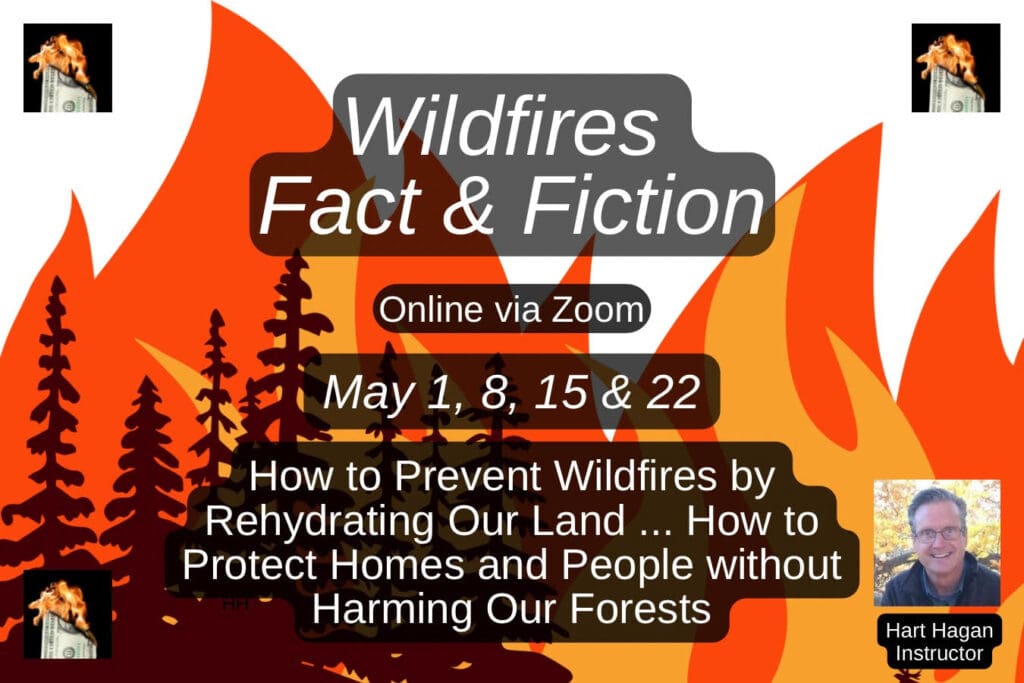
Wildfires Fact & Fiction — May 1, 8, 15 & 22
Wildfires are a very real threat, and we should be prepared. Unfortunately, we have been sold a range of false solutions (e.g., fuel reduction, forest thinning and prescribed burns), all at taxpayer expense.
Wildfires Fact & Fiction will equip you with the most essential knowledge to protect homes and communities, while giving our forests what they really need, which is to be naturally rehydrated and nurtured as ecosystems. Discover how thriving ecosystems, including beaver ponds, help protect communities from wildfires, and learn actionable solutions that could reshape wildfire prevention policies.
Join us for Wildfires Fact & Fiction: How…
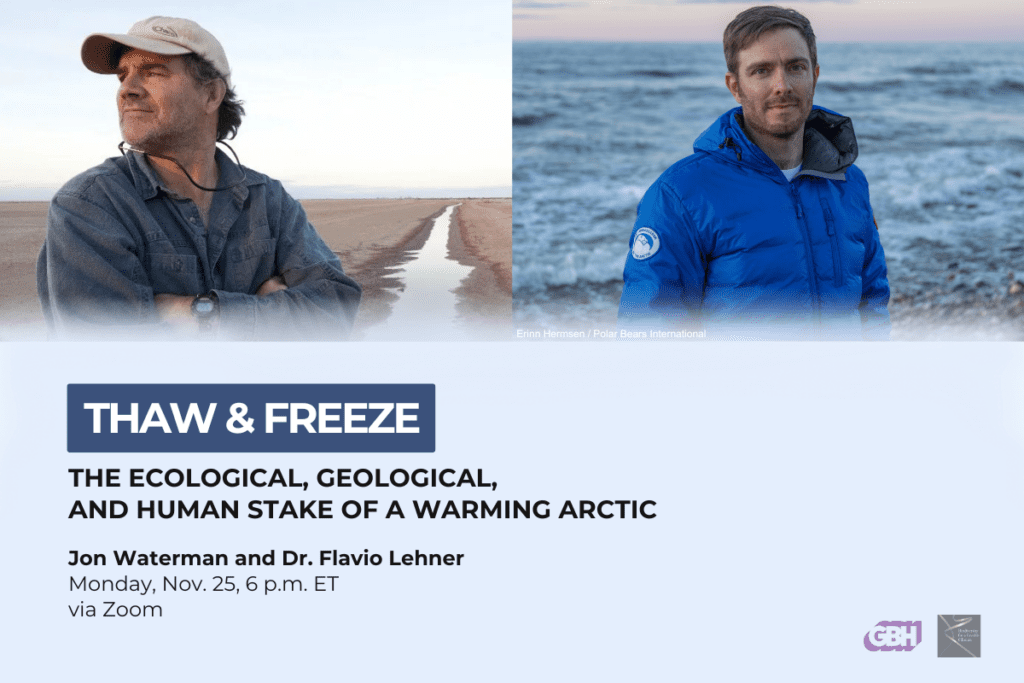
Thaw and Freeze: The ecological, geological, and human stakes of a warming Arctic
A rapidly changing Arctic is reshaping everything. Polar bears navigate shrinking expanses of sea ice, thawing permafrost threatens coastal villages, destabilizes infrastructure, and exhales methane, and warming temperatures push more species northward into a greener arctic. These transformations are profound, and their impacts can extend far beyond the region’s ecologies that depend on them.
What do these changes mean for wildlife, humans, and the climate? How is all of this going to play out in different regions and ecosystems around the world? Does understanding these changes and seeing them with your own…
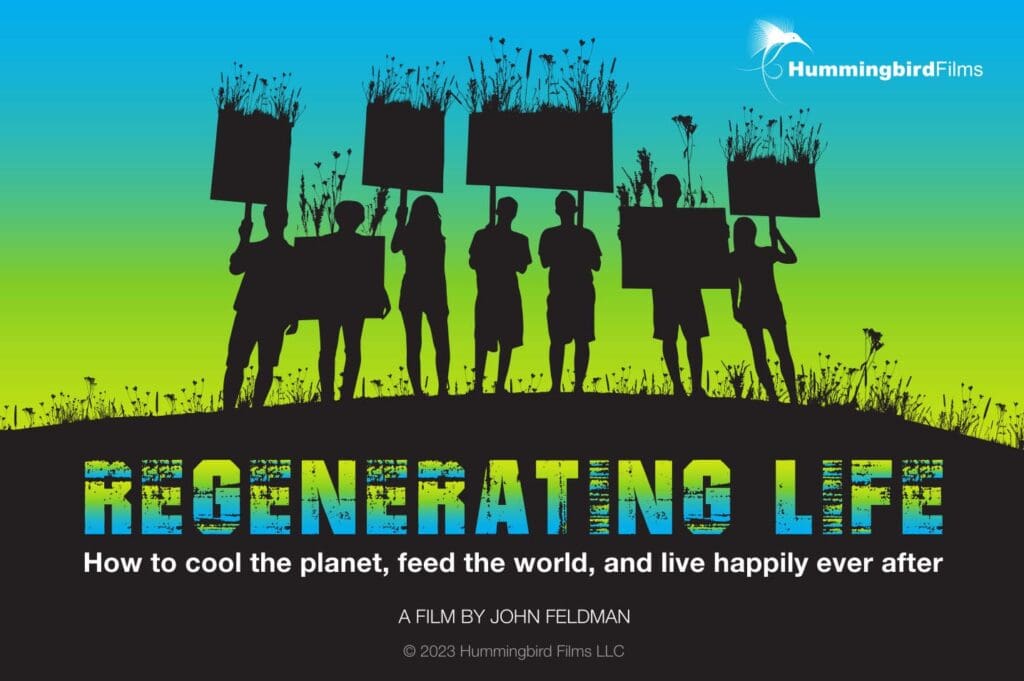
Regenerating Life: Upcoming Screenings
Regenerating Life is a groundbreaking film that reframes the climate crisis by focusing on nature’s power to heal our planet. It reveals how the biosphere egulates Earth’s climate and how its destruction has driven global warming.
The film highlights regenerating ecosystems like forests, fields, and wetlands, restoring the water cycle, and embracing sustainable practices like regenerative agriculture that draw CO2 from the atmosphere, cool the planet, revive freshwater systems, and create abundant food and thriving communities.
Visit Hummingbird Films for upcoming screenings.
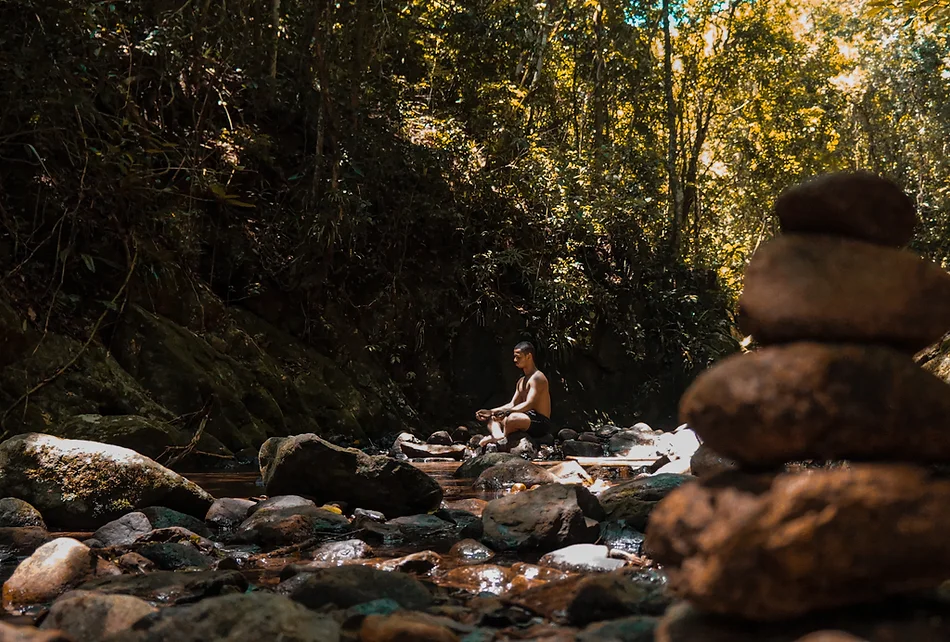
Tell nature’s climate story, the story of connection and life.
― Beck Mordini
Transformation in Mexico
Eco Restoration Works
Watch what happens! A degraded landscape in Mexico is transformed by regenerative management. It took only two years (the arrow points to the same tree).

